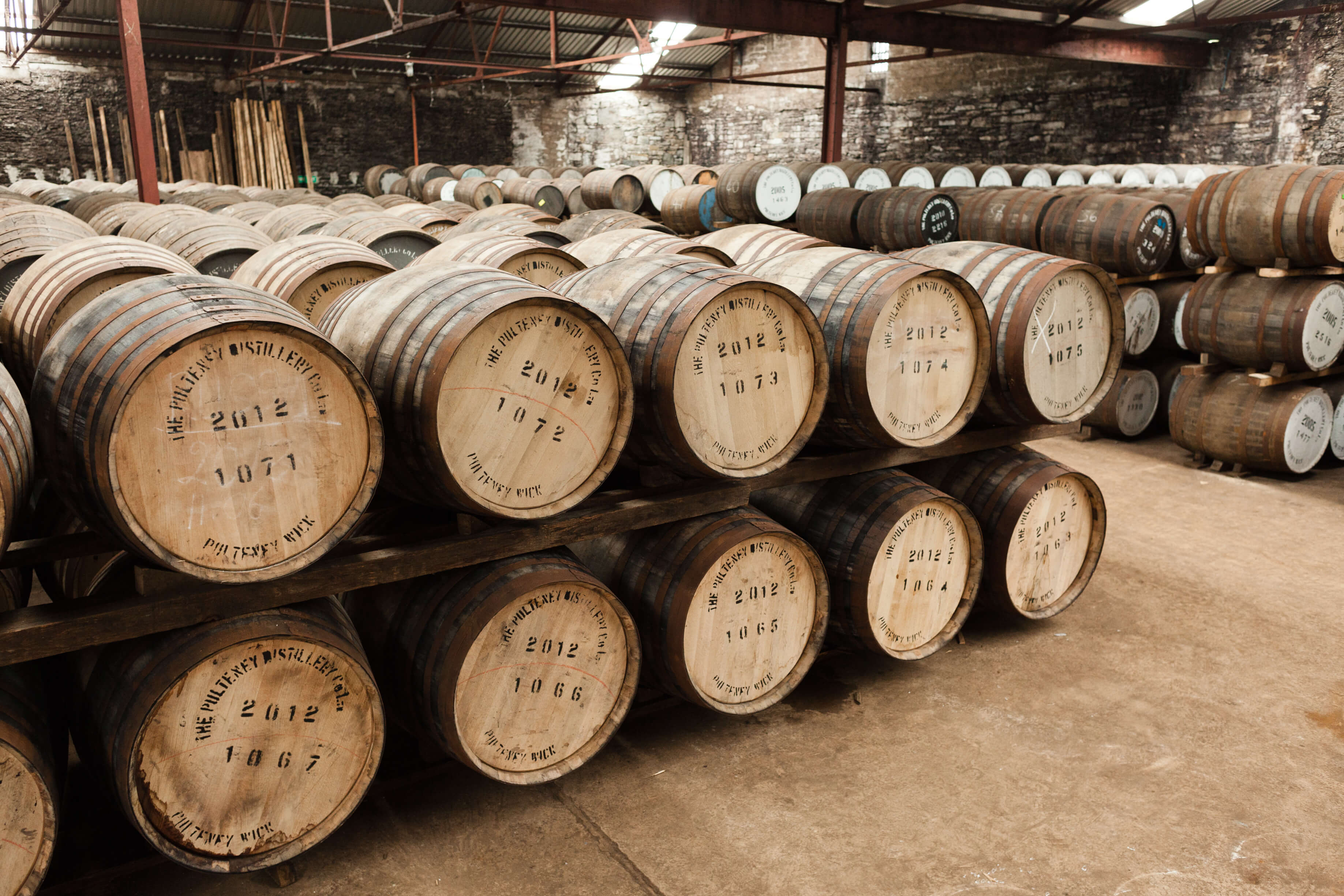Old Pulteney Unveils Third ‘Flotilla’ Vintage In Paris
The Entente Cordiale is once again being honoured with the launch of our third ‘Flotilla’ vintage, initially made available in France
Read more
Read the first article in our quick-guide to the whisky cask.
Whisky cask is one of those things that seem simple at first but the more you learn about them, the more you appreciate the complexity of the issue. There are all sorts of processes happening in the cask while whisky matures, there are different types of oak and different methods of handling it. Whisky casks used in Scotland are also seasoned and can be re-filled several times, that’s another variable in the equation. And then consider the fact that neither the spirit nor the wood are ever perfectly consistent. Sound a complex? We’re here to help. Here’s our quick guide to the whisky cask – a few simple facts to help you understand why your favourite Old Pulteney tastes the way it does and give you just a bit more background on the story of the cask. And to make it even more digestible we’ve divided our quick guide into two parts, the second one will be posted tomorrow.
It’s a fair question. After all Scotch used to be clear, occasionally flavoured with herbs, fruits or spices and probably not very palatable by today’s standards. Small stills, inconsistency, often distilling in a hurry to avoid being found out by the excise men. The whisky industry has come a long way since its humble beginnings. Probably the biggest changes happened during the Victorian era and the industrial revolution. Most traditional distilleries operating in Scotland today were built in the 19th century. The developments of those times allowed an exponential increase in the volume and the quality of the Scottish distillate.
It’s also around that time that ageing whisky in oak casks became more widespread. But it wasn’t until the 1900’s that all Scottish distillers were finally required to mature their distillate for at least three years if they wanted to call it scotch whisky. This drive had a very well-founded motive behind it. Taste.
As Scotch Whisky was becoming an international export product it was starting to compete on the global market. Quality and consistency were a worthwhile investment. An oak cask gives whisky colour, aroma and flavour while removing some of the harsher, ‘immature’ notes. The distillers have known this for hundreds of years, after all oak casks have forever been used to store and transport spirits. But it was the competition, the industrialisation of the process and the access to an abundant source of casks (we’ll explain next week) that made maturation on a large scale possible.
And so a lot of the characteristics we associate with Old Pulteney today are derived from the cask itself or the lengthy maturation. The subtle vanilla, the creaminess, the sweetness of butterscotch, cloves, cinnamon, nutmeg and black pepper, the dried fruit such as raisins, dates or smoked plums, the orange peel, the indulgent white chocolate notes or the richness of waxed leather. Praise the ingenuity, good taste and competitive spirit of our predecessors for without quality wood there would be no Pulteney. But remember that the cask is only half of the story.
Check back tomorrow (19th September 2013) for the second part of our whisky cask quick guide.
To visit our website, you must be of an age at which the purchase and consumption of alcohol is permitted according to the legislation in your country of residence.
If there are no laws on this matter, then you must be at least 18 years old.
Terms and ConditionsAlcohol abuse is dangerous to your health.
Drink Responsibly.